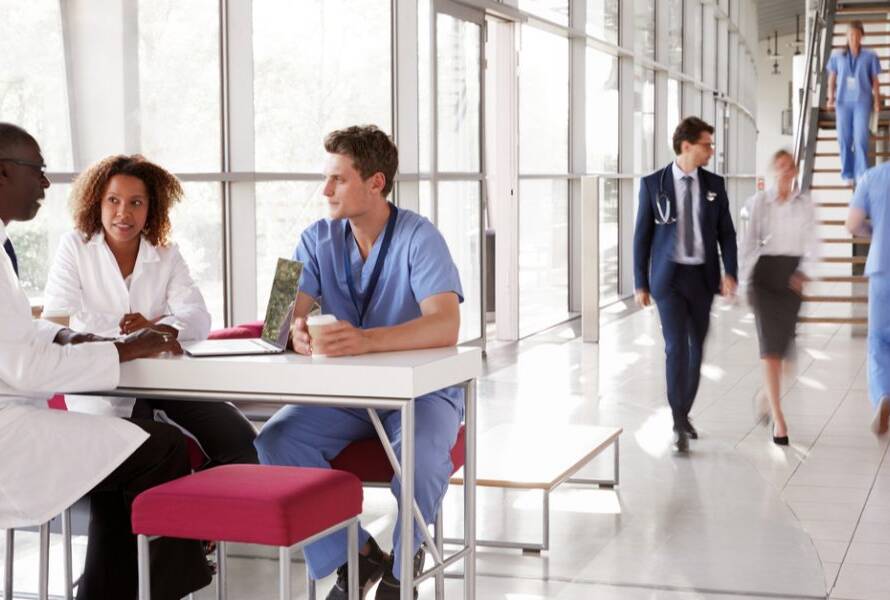The COVID-19 pandemic has only heightened the focus on security and safety in K-12 environments, with faculties now simultaneously focusing on both traditional security needs as well as new everchanging health related measures. The trends that have emerged as critical are perimeter security, emergency communications and situational awareness, and active shooter systems.
Perimeter Security Technology
The trend in the past decade plus has been towards limiting who can access the facility, where they can access it from, and when they can access it. Perimeter security, specifically cameras and door access systems, have traditionally been the primary security focus of the education sector and that continues to be the case. Campuses operated with wide scale accessibility when students were on campus.
In addition, cameras and video management software have provided the tools for real time monitoring and after the fact investigation of incidents that occur while on campus. These tools allow for situational awareness that remains important to this day.
Emergency Communication And Situational Awareness
As on-campus emergency incidents continue to be a terrifying reality, the need for real time awareness and emergency communication is vital. Educational institutions have benefited from the CARES Act, and other grants, by using those funds to upgrade out of date systems for potential worst-case scenarios.
Quick, efficient, and accurate information are critical for first responders. The utilization of modern-day technology can have a major impact when dealing with matters of life and death.
Officers and school administrators can now access and share live video, shut down access to facilities, and perhaps more importantly do so from their phones or tablets as opposed to full scale workstations.
The continued advances in high-resolution cameras, combined with software enabled technologies like dynamic resolution scaling offer officers the highest quality video when it matters most, with the lowest possible bandwidth related disruptions.
Active Shooter Systems
The safety of children in schools is critical, and it’s an unfortunate reality that detecting active shooters continues to be such a pressing concern. Fortunately, technology continues to evolve in this area, and schools can leverage their existing camera and video management systems in tandem with new active shooter systems to increase campus safety.
Active shooter systems can come in multiple forms, and each seek to identify firearm related incidents and alert as quickly as possible. The vital systems can best be defined in two categories: acoustic detection, and visual detection.
Acoustic detection systems only alert once a firearm has been discharged, while visual detection systems seek to be proactive in alerting to a dangerous situation.
Acoustic systems may come as part of an onboard camera analytics package, or may be a stand-alone purpose-built system with more intensive hardware requirements. Regardless, the firearm alert will only occur following the discharge of a firearm, which lowers the speed at which officers may take steps to mitigate the situation.
A video management system that utilizes video-based shooter detection has the benefit of alerting in advance of a firearm discharge. Users can be alerted when software analysis indicates an individual is carrying a firearm in the facility, and more recent products take it a step further with centralized confirmation monitoring of AI detected events to increase accuracy.
Just as we are seeing a trend back towards normalcy in commercial entities, we are also seeing a large-scale transition back into in person classroom learning in educational facilities. K-12 environments benefit greatly from any and all of these technologies, and we continue to see more widespread adoption.
Educational organizations trust Salient’s CompleteView™ to deliver video security where it matters most
Additional Resources
Paul Smith
Paul Smith is Director of Sales, South for Salient Systems. In this role, he manages a team tasked with sales and customer development within a nine state region.
Paul joined Salient Systems in 2014, originally as Manager of the Technology Partner Program, where he created and implemented a program that focused on establishing and growing partnerships with complimentary manufacturers.
Between 2015 and 2022, Paul was District Sales Manager then Regional Sales Manager for the Central territory. During this time he assisted his customers and channel partners with design and implementation of custom, integrated solutions.
Paul is an engaging speaker, knowledgeable in all aspects of Salient’s Security Platform, and has accumulated a wide base of knowledge in numerous vertical markets since taking on this role.






